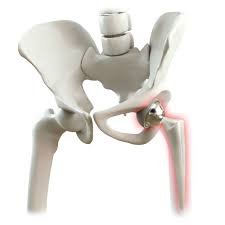Hip replacement surgery is a medical procedure that has helped millions of people regain mobility and live pain-free. Whether you’re suffering from osteoarthritis, rheumatoid arthritis, or injury, hip replacement may be the solution to improve your quality of life. This comprehensive guide provides insight into hip replacement surgery, the types, recovery process, and what to expect post-operation.
What Is Hip Replacement Surgery?
Hip replacement surgery, also known as hip arthroplasty, involves removing damaged parts of the hip joint and replacing them with prosthetic components. The goal of the surgery is to relieve pain, restore joint function, and enable patients to resume their daily activities with minimal discomfort.
Hip replacement is commonly performed on individuals with:
- Osteoarthritis: The wear-and-tear arthritis that breaks down cartilage in the hip.
- Rheumatoid arthritis: An autoimmune condition where the body’s immune system attacks its tissues, leading to inflammation and damage.
- Hip Fractures or Injuries: Resulting from falls, accidents, or sports injuries.
- Avascular Necrosis: A condition that occurs when blood supply to the bone is reduced, leading to bone death and joint collapse.
What are the Types of Hip Replacement Surgery?
There are several types of hip replacement surgeries, depending on the patient’s condition, age, and lifestyle:
Total Hip Replacement (THR): This is the most common form, where the damaged ball-and-socket joint is replaced with a prosthetic joint made from metal, ceramic, or plastic components. It is ideal for patients with severe arthritis or extensive damage to the hip joint.
Partial Hip Replacement (PHR): In this surgery, only the ball of the hip joint is replaced. It is typically performed on older adults who have experienced a hip fracture.
Hip Resurfacing: This procedure preserves more of the patient’s natural bone by reshaping and capping the ball of the hip joint with a smooth metal covering. It is suitable for younger, active individuals with arthritis.
Revision Hip Replacement: For patients who have had previous hip replacement surgery that has failed or worn out, a revision surgery may be necessary to replace the old prosthetic with a new one.
The Hip Replacement Surgery Procedure
The procedure typically involves the following steps:
Pre-operative Preparation: The patient undergoes a series of medical tests, including blood tests, X-rays, and sometimes an MRI. Your surgeon will provide instructions on medications, diet, and physical activity in the days leading up to the surgery.
Anesthesia: Hip replacement surgery is performed under either general anesthesia, which puts you to sleep, or spinal anesthesia, which numbs the lower half of your body. Your anesthesiologist will discuss the best option based on your medical history.
Incision and Joint Removal: The surgeon makes an incision over the hip and removes the damaged cartilage and bone.
Inserting the Prosthetic Joint: The new hip joint is implanted into the bone, and the surgeon tests the mobility and stability of the joint to ensure a proper fit.
Closing the Incision: Once the new joint is securely in place, the incision is closed with stitches or surgical staples, and a sterile dressing is applied.
How to Prepare for Hip Replacement Surgery
1. Pre-surgery Exercises: Strengthening the muscles around the hip joint can improve recovery. Low-impact exercises such as swimming or cycling can help maintain mobility before surgery.
2. Prepare Your Home: Ensure your home is equipped with the necessary aids such as grab bars, elevated seating, and a walker or crutches. Place items within easy reach to avoid bending or stretching post-surgery.
3. Plan for Assistance: It’s essential to have someone help you during the first few weeks of recovery, as tasks like dressing, bathing, and cooking may be challenging.
How After Hip Replacement Surgery Recovery?
1. Hospital Stay: Most patients stay in the hospital for 2-3 days after surgery. During this time, medical staff monitor your progress and help you manage pain. Physical therapy typically begins the day after surgery to help restore mobility.
2. Rehabilitation: Rehabilitation is crucial to regain strength and range of motion. Your physical therapist will guide you through exercises designed to strengthen your hip muscles and improve flexibility. You may use crutches or a walker for the first few weeks post-surgery.
3. Home Recovery: At home, it’s important to continue physical therapy exercises, avoid high-impact activities, and follow your doctor’s recommendations for pain management. Most patients can resume normal activities, such as driving, within 6-8 weeks.
4. Long-Term Care: Even after full recovery, it’s essential to maintain an active lifestyle with low-impact exercises like swimming, walking, or cycling to protect your new joint. Annual check-ups with your surgeon will ensure the longevity of your prosthetic joint.
What are the Common Risks and Complications?
While hip replacement surgery is generally successful, like any surgery, it carries certain risks:
- Infection: Although rare, infection can occur at the incision site or within the joint.
- Blood Clots: Deep vein thrombosis (DVT) can occur in the legs post-surgery. Doctors often prescribe blood thinners to reduce this risk.
- Dislocation: In some cases, the new joint may dislocate, requiring additional procedures.
- Leg Length Inequality: Some patients may feel that one leg is longer than the other. This is often resolved over time with physical therapy.
When to Consider Hip Replacement Surgery
You may want to discuss hip replacement surgery with our doctor if:
- You experience persistent hip pain that limits daily activities such as walking or bending.
- You have difficulty sleeping due to hip discomfort.
- You have tried non-surgical treatments such as physical therapy or medications without success.
Hip Replacement Surgery:
1. How Long Does a Hip Replacement Last?
Most hip replacements last between 15 to 20 years, though advancements in technology may extend the lifespan of newer prosthetic joints.
2. Can I Return to Sports After Surgery?
While low-impact sports are encouraged, it’s best to avoid high-impact activities like running or basketball. Consult your surgeon for advice on returning to specific activities.
3. Will I Need Physical Therapy?
Yes, physical therapy is crucial for regaining mobility and strength after hip replacement surgery. Your therapist will design a rehabilitation program tailored to your recovery goals.

